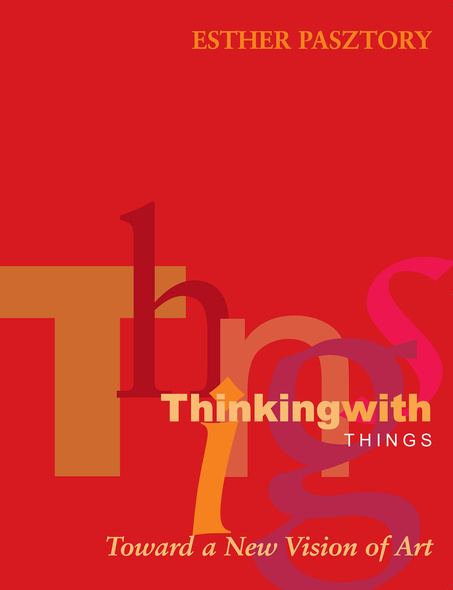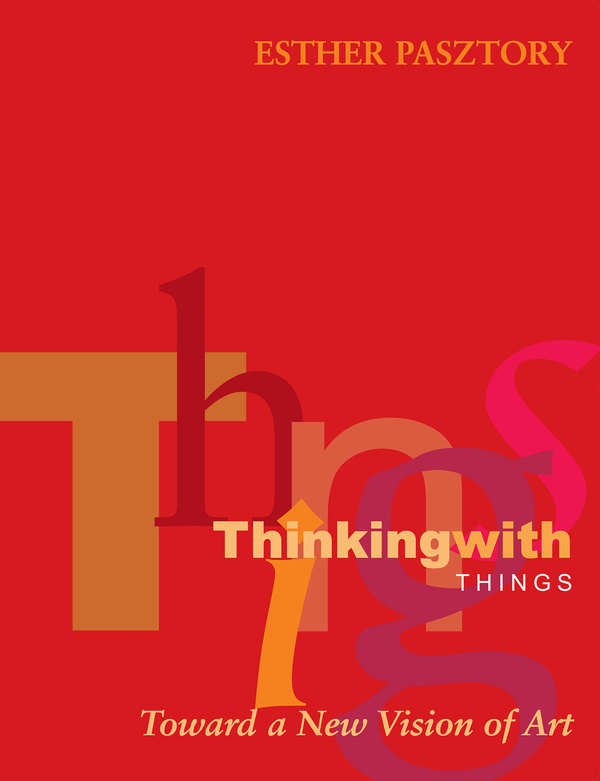What is "art"? Why have human societies through all time and around the globe created those objects we call works of art? Is there any way of defining art that can encompass everything from Paleolithic objects to the virtual images created by the latest computer technology? Questions such as these have preoccupied Esther Pasztory since the beginning of her scholarly career. In this authoritative volume, she distills four decades of research and reflection to propose a pathbreaking new way of understanding what art is and why human beings create it that can be applied to all cultures throughout time.
At its heart, Pasztory's thesis is simple and yet profound. She asserts that humans create things (some of which modern Western society chooses to call "art") in order to work out our ideas—that is, we literally think with things. Pasztory draws on examples from many societies to argue that the art-making impulse is primarily cognitive and only secondarily aesthetic. She demonstrates that "art" always reflects the specific social context in which it is created, and that as societies become more complex, their art becomes more rarefied.
Pasztory presents her thesis in a two-part approach. The first section of the book is an original essay entitled "Thinking with Things" that develops Pasztory's unified theory of what art is and why we create it. The second section is a collection of eight previously published essays that explore the art-making process in both Pre-Columbian and Western societies. Pasztory's work combines the insights of art history and anthropology in the light of poststructuralist ideas. Her book will be indispensable reading for everyone who creates or thinks about works of art.
As a major scholar of Meso-American art, Pasztory has written a valuable and substantive text.
It would greatly contribute to the revitalization of art history if its practitioners would respond to Esther Pasztory’s book with an energy commensurate with its critical polemic. She views art from a very long historical perspective, places it in a social science context, shifts the emphasis from taste to cognition, and brings it under the methodology implied by her title Thinking with Things. Taken together, this involves nothing less than a transformation of vision, with the widest implications for the practice of her discipline.
Thinking with Things is an ambitious essay that addresses some of the fundamental issues in the fields of art history, anthropology, and aesthetics. Extending the discourse of George Kubler’s classic The Shape of Time, Pasztory more directly confronts questions of form, representation, and the meaning of objects created by homo faber.
Esther Pasztory, a renowned art historian, has immersed herself in the data and theory of anthropology, helping her forge tools which she employs to great advantage in this volume. Eschewing a narrowly ‘esthetic’ point of view, she shows, over and over again, how a people’s art emerges from and reflects its social context. Fearlessly invading the thorny thickets of esthetic theory, Dr. Pasztory grapples with its great issues and presents to the reader a succession of views that are at once engaging, incisive, and provocative.
Esther Pasztory is the Lisa and Bernard Selz Professor of Pre-Columbian Art History and Archaeology at Columbia University.
- A Note to the Reader
- Acknowledgments
- Part One
- Introduction to Part One
- 1. Things
- 2. Thinking with Things
- 3. Levels of Social Integration
- 4. Insistence
- 5. Superpositions
- 6. Impersonation
- 7. Enhancement
- 8. Apotheosis
- 9. Iconoclasm/Aestheticism
- 10. Media/Marginalization
- 11. Transition
- Bibliography to Part One
- Part Two
- Introduction to Part Two: Confessions of a Formalist
- 12. Still Invisible: The Problem of the Aesthetics of Abstraction for Pre-Columbian Art and Its Implications for Other Cultures
- 13. Identity and Difference: The Uses and Meanings of Ethnic Styles
- 14. The Portrait and the Mask: Invention and Translation
- 15. Aesthetics and Pre-Columbian Art
- 16. Andean Aesthetics
- 17. Three Aztec Masks of the God Xipe
- 18. Shamanism and North American Indian Art
- Index





